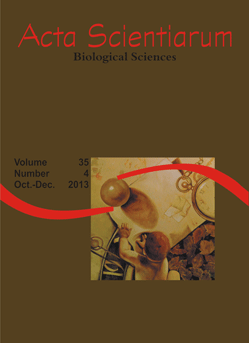<b>Influence of pitfall designs and use of baits on the capture of small mammals in Southern Minas Gerais, Brazil</b> - doi: 10.4025/actascibiolsci.v35i4.17498
Abstract
Each kind of trap tends to be selective on species sampled, in a way that each one only reveals part of the abundance and species richness of the community sampled. In this way, in order to know the factors that affect the success of sampling methods is crucial for a better planning of experiments and data analysis. The aim of this study was to evaluate the factors that affect the success of pitfall traps in capturing small mammals, such as trap size, designs and use of bait. The study was carried out in two reserves inside the campus of the Universidade Federal de Lavras (UFLA), in South Minas Gerais State, Brazil. In total, 65 specimens belonging to 8 species were caught. Different types of trap design (Y-shaped and I-shaped) have not influenced the capture success of pitfalls. The same result was obtained for the different size of buckets, in exception for Oligoryzomys flavescens, in which larger buckets were more efficient. The use of baits was considered not necessary.
Downloads
DECLARATION OF ORIGINALITY AND COPYRIGHTS
I Declare that current article is original and has not been submitted for publication, in part or in whole, to any other national or international journal.
The copyrights belong exclusively to the authors. Published content is licensed under Creative Commons Attribution 4.0 (CC BY 4.0) guidelines, which allows sharing (copy and distribution of the material in any medium or format) and adaptation (remix, transform, and build upon the material) for any purpose, even commercially, under the terms of attribution.
Read this link for further information on how to use CC BY 4.0 properly.












1.png)




3.png)













